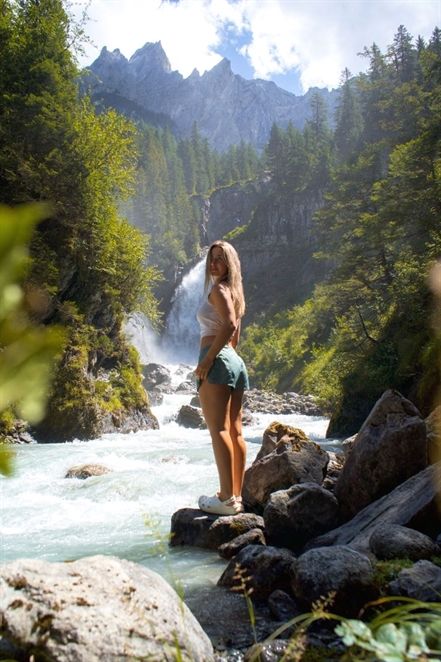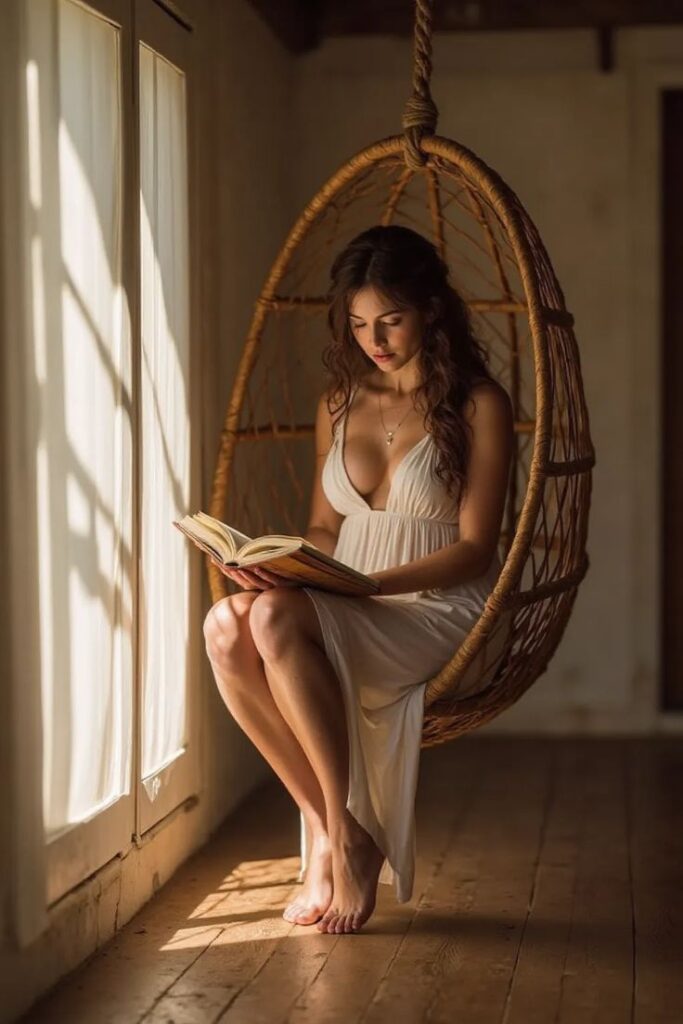Why Candid Portraits Matter in Public Spaces
In the world of photography, candid portraits stand out for their raw and genuine expressions, capturing people in their natural state. Unlike posed portraits, candid shots focus on moments of spontaneity and authenticity, especially in the bustling environment of public spaces. Whether you’re an amateur photographer or a professional looking to expand your skill set, shooting candid portraits in public spaces offers a unique opportunity to capture the essence of individuals.
This blog will dive deep into the art of shooting candid portraits, specifically in public areas, and provide tips, techniques, and essential considerations to help you achieve stunning and authentic shots.
Understanding Candid Portrait
What are Candid Portraits?
Candid portraits are photographs taken without the subject’s awareness or while they are unaware of the photographer’s presence. These portraits highlight genuine emotions, expressions, and moments that typically go unnoticed in posed shots. Shooting candid portraits is an art that requires patience, timing, and a keen eye for detail.
Why Shoot Candid Portraits in Public Spaces?
Public spaces offer a wide range of settings, backgrounds, and lighting conditions that can add depth and context to candid portraits. The unpredictability of public spaces allows photographers to capture the raw essence of everyday life—something that posed portraits often lack. Shooting in such environments challenges photographers to think creatively while maintaining a sense of authenticity.
Essential Tips for Shooting Candid Portrait in Public Spaces
1. Blend into the Environment
One of the biggest challenges when capturing candid portraits in public is staying unnoticed. Blending into your surroundings is key to getting authentic shots without drawing attention to yourself. To achieve this:
- Wear neutral or dark clothing that doesn’t stand out.
- Use smaller, less obtrusive gear, such as mirrorless cameras or compact cameras.
- Avoid eye contact with your subjects to not disturb their natural behavior.
2. Master the Use of Natural Light
Natural light can enhance the authenticity and warmth of candid portraits. In public spaces, lighting is often unpredictable, but it can add a unique atmosphere to your photos.
- Early morning or late afternoon (golden hour) provides soft, warm light, perfect for portrait photography.
- Overcast days can create soft, diffused light, reducing harsh shadows and highlighting your subject’s features.
Experiment with different times of day to understand how light influences the mood of your candid portraits.
3. Anticipate the Moment
Capturing the perfect candid moment requires anticipation. You need to be observant and ready to click at the right moment. Train your eye to look for:
- Subtle interactions between people.
- Emotional expressions or gestures.
- Unique body language that tells a story.
When shooting candid portraits, you must be ready to react quickly. Pre-focus on your subject, then wait for them to come into the frame.








4. Focus on Composition
Even though candid portraits are spontaneous, composition remains crucial. A well-composed shot can elevate the quality of your photo, turning a simple moment into a powerful image.
- Use the Rule of Thirds to frame your subject naturally within the scene.
- Pay attention to the background, ensuring it doesn’t distract from your subject.
- Keep an eye on the surroundings to avoid any distracting elements, like people or objects that may take away from the subject’s focus.
5. Get Close and Personal
While some candid portraits benefit from wide shots, getting closer to your subject can create more intimate, powerful portraits. Being close allows you to capture facial expressions and emotions more clearly, showcasing vulnerability and connection.
- Don’t be afraid to move closer to your subject, but always respect their personal space.
- Focus on the eyes, as they are often the most powerful part of a portrait.
6. Stay Unobtrusive with Your Gear
In public spaces, large cameras with flashy lenses can draw unwanted attention. To avoid disturbing the natural flow of your subject’s actions, opt for smaller gear that won’t make a scene.
- Use a camera with a quiet shutter to avoid startling your subject.
- Consider using a prime lens (like a 35mm or 50mm) for discreet shots, as these lenses are smaller and faster.
7. Respect Privacy and Boundaries
While capturing candid portraits in public spaces, it’s essential to respect privacy and ethical boundaries. Even though the subjects are in a public place, being considerate of their feelings is important.
- Avoid photographing vulnerable individuals or those who may not wish to be photographed.
- If you are asked not to take someone’s picture, respect their wishes immediately.
- Consider the context of the shot and whether it may be considered intrusive or inappropriate.
8. Capture the Environment Around Your Subject
Candid portraits are not just about the person being photographed. The environment plays a significant role in telling a deeper story about the subject’s context.
- Include elements of the surrounding space to convey a sense of place.
- Use the background to highlight the subject’s interaction with their surroundings.
- Look for interesting contrasts between your subject and their environment.
Overcoming Challenges in Public Spaces
1. Dealing with Distracting Elements
Public spaces can be noisy and crowded, which may make it difficult to focus on the subject or maintain the quality of your candid portraits. To overcome this:
- Use a shallow depth of field to blur out distracting backgrounds.
- Pay attention to your framing, ensuring that unwanted elements stay out of focus.
- Wait for the right moment when distractions fade or align naturally with your subject.
2. Managing the Risk of Being Noticed
It’s common for subjects to notice a photographer, which can alter the authenticity of a candid moment. If this happens, stay calm and continue shooting until they go back to their natural behavior. You can also engage in small, non-intrusive conversations to help your subject feel comfortable.
3. Working with Unpredictable Weather
Public spaces expose you to unpredictable weather conditions, which can either add drama to your shots or complicate things. Be prepared for sudden changes in weather:
- Carry weather-resistant gear or a simple cover for your camera.
- Embrace the mood that different weather conditions create, such as rain for a moody shot or bright sunlight for an energetic feel.
Post-Processing Candid Portrait
Editing your candid portraits is an essential part of the process. While the shot should be authentic, slight adjustments can enhance the mood, lighting, and color palette of your photo.
- Adjust the exposure and contrast to bring out the subject’s facial features.
- Crop the image if necessary, focusing on the most engaging part of the portrait.
- Apply light retouching to remove any distractions or blemishes.
However, aim to keep the image as natural as possible. Over-editing can remove the authenticity that candid portraits are known for.
Conclusion: Mastering the Art of Candid Portrait in Public Spaces
Shooting candid portraits in public spaces is both an exciting and challenging endeavor. It requires patience, a good understanding of the environment, and an ability to anticipate and capture the perfect moment. With practice and the tips shared in this guide, you’ll be able to take your candid photography skills to the next level, creating stunning portraits that capture the true essence of your subjects.

Mobile Photography Hacks: Candid Moments with Your Phone

Professional Model & Portfolio Photoshoots: Show Your Best Work
-

Street Photography Tips, Effects & Poses – Complete Guide
-

Leica Q2 for Photography: Why It’s Loved by Photographers
Mobile Photography Hacks: Candid Moments with Your Phone
Discover high-impact mobile photography hacks to capture genuine, gorgeous candid moments with your phone. Learn practical tips, composition secrets, and pro techniques to turn everyday scenes into stunning visual stories. Introduction: The New Age of Mobile Photography Photography has evolved beyond heavy cameras, technical jargon, and expensive equipment. Today, the power to capture extraordinary moments
Professional Model & Portfolio Photoshoots: Show Your Best Work
” Discover how to plan, style, and execute stunning portfolio photoshoots that showcase your skills, personality, and versatility. This comprehensive guide covers professional tips, posing ideas, gear suggestions, and industry insights for models and photographers.” Introduction – Why Portfolio Photoshoots Are the Cornerstone of a Photographer’s Career A well-crafted portfolio photoshoot is more than a
Street Photography Tips, Effects & Poses – Complete Guide
Discover the ultimate guide to Street Photography with expert tips, creative effects, and dynamic poses. Learn how to capture authentic urban moments, master composition, and tell powerful visual stories through your lens. Article Outline 1. Introduction to Street Photography Street Photography is more than just taking pictures of people in public spaces — it’s about
Leica Q2 for Photography: Why It’s Loved by Photographers
Introduction: The Cult Status of the Leica Q2 The Leica Q2 is not just a camera—it’s a statement. Combining the heritage of German precision engineering with modern digital excellence, it holds a special place in the hearts of professional and passionate photographers alike. With its full-frame sensor, prime Summilux lens, and minimalist design, the Q2
Top Cameras Under ₹1 Lakh for Freelance Photography
Freelance photography is no longer a niche—it’s a booming creative profession that demands not only vision and hustle but also the right gear. Your camera isn’t just a tool; it’s your storytelling partner. If you’re a freelance photographer aiming to balance performance, versatility, and budget, investing in a cameras under ₹1 lakh can offer the
Top Features of Nikon D850 That Make It Ideal for Photoshoots
Explore the top features of the Nikon D850 that make it a powerhouse for photoshoots. From exceptional resolution to dynamic range, this detailed Nikon D850 guide is built for professional and aspiring photographers. 1. Introduction When Nikon launched the D850, it quickly earned a reputation as a flagship DSLR that redefined what photographers could expect





